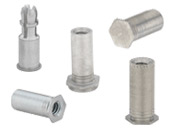PennEngineering is a prominent brand known for its engineering-focused approach. The company prioritizes direct interaction between its engineers and customers. While the concept of how products are held together might not be at the forefront of your mind, it is the sole focus of PennEngineering. They firmly believe that small components can have a significant impact, and their dedication lies in creating enduring connections. PennEngineering is also known as Atlas Engineering, PEM Fastening Systems, Standard Insert, and Penn Engineering.
The PennEngineering® family of companies develops innovative fastener solutions that shape the industry. As the global leader in mechanically attached fasteners, installation equipment, and engineered components, PennEngineering serves the automotive, electronics, datacom, electric vehicle, solar, metal fabrication, and industrial markets. PennEngineering, headquartered in Danboro, PA, and founded in 1942, is a global leader in fastening solutions. As the parent company of PennEngineering, PennEngineering Automotive Fasteners, and pennTool™ Group, it offers fastener and installation design solutions for diverse industries, including electronics, computers, data/telecom, medical, automotive, marine, aerospace, and general manufacturing.
PEM® self-clinching fasteners are inserted into a hole in the workpiece, where they displace the surrounding material. This material cold-flows into a recess in the fastener’s shank area. Serrations or a specially-shaped head prevent the fastener from rotating, making it integral with the workpiece. Additionally, PEM® self-clinching fasteners leave no damage or bulges on the back of the component.
PEM® Fasteners
What is a PEM Fastener? PEM fasteners, designed and manufactured by PennEngineering, utilize self-clinching technology for attaching to thin sheet metal. A self-clinching fastener is any device, usually threaded, that when pressed into ductile metal, displaces the host material around the mounting hole, causing it to cold flow into a specially designed annular recess in the shank or pilot of the fastener.
PEM® brand fasteners utilize self clinching, broaching, flaring, surface mount, or weld technology to provide strong, reusable, and permanent threads and mounting points in thin sheet metal, P.C. board materials, and other ductile or non-ductile thin material. ![]()
PEM® brand fasteners, offered by PennEngineering, employ various technologies such as self-clinching, broaching, flaring, surface mount, or weld methods. These fasteners are designed to establish robust, reusable, and permanent threads and mounting points in thin sheet metal or P.C. board materials. For compact electronics, microPEM fasteners are particularly suitable, catering to applications such as smartwatches, laptops, notebooks, tablets, smartphones, and handheld devices.

Nuts For Sheet Metal
Self-clinching nuts are installed by placing them into appropriately sized holes in sheets and applying a parallel squeezing force to the nut’s head. The surrounding sheet metal cold-flows into an undercut, making the fastener an integral part of the sheet. A serrated clinching ring ensures the fastener remains secure and prevents rotation after installation. These fasteners provide load-bearing threads in thin sheets with excellent push-out and torque-out resistance. Type CLA is recommended for use in steel or aluminum.
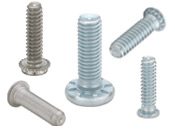
Studs and Pins for Sheet Metal
Standoffs for Sheet Metal
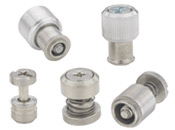
Captive Panel Screws and Hardware

Sheet To Sheet Attachment
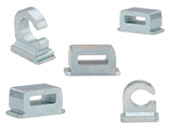
Cable Tie Mounts and Hooks for Sheet Metal

Fasteners for Printed Circuit Boards
PEM fasteners offer a reliable solution for designs that need strong, reusable threads in non-ductile materials like printed circuit boards. All PEM fasteners comply with industry standards for compatibility with standard automatic insertion equipment, are REACH and RoHS compliant, and are available in various finishes upon request.

microPEM Fasteners
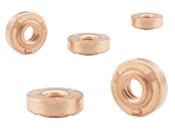
Weld Nuts

SI® Inserts for Plastics
Headquartered in Danboro, PA, and founded in 1942, PennEngineering is a global leader in fastening solutions. As the exclusive manufacturer of genuine PEM brand fasteners, PennEngineering provides strong, load-bearing threads in thin metal sheets. PennEngineering companies offer fastener and installation design solutions for diverse industries, including electronics, computers, data/telecom, medical, automotive, marine, aerospace, and general manufacturing. With manufacturing and technical facilities in the United States, Europe, and Asia, supported by a network of authorized engineering representatives and distributors, PennEngineering is well-positioned to serve customers worldwide.
Self-Clinching Fastener Installation Do’s and Don’ts
Do’s
- Provide the specified mounting hole sizefor each fastener.
- Ensure the shank (or pilot) is within the holebefore applying installation force.
- Apply squeezing force between parallel surfaces.
- Apply sufficient forceto completely embed the clinching ring around the entire circumference and bring the shoulder squarely in contact with the sheet. For some fasteners, installation is complete when the head is flush with the panel surface.
Don’ts
- Do not install steel or stainless steel fastenersin aluminum panels before anodizing or finishing.
- Do not debur mounting holeson either side of the surface before installing panel fasteners, as deburring will remove metal required for clinching the fastener into the sheet.
- Do not install panel fasteners closer to the edge of the sheetthan the minimum edge distance indicated by the manufacturer, unless a special fixture is used to restrict bulging of the sheet edge.
- Do not over-squeeze.Over-squeezing will crush the head, distort threads, and buckle the sheet. Determine the optimum installation force by testing prior to production runs.
- Do not attempt to insert panel fasteners with a hammer blowunder any circumstances. A hammer blow won’t allow the sheet metal to flow and develop an interlock with the fastener’s contour.
- Do not install the screw from the head side of the fastener.Install from the opposite side so that the fastener load is toward the sheet. The clinching force is designed only to hold the fastener during handling and to resist torque during assembly.
- Do not install panel fasteners on the pre-painted sideof the panel.
